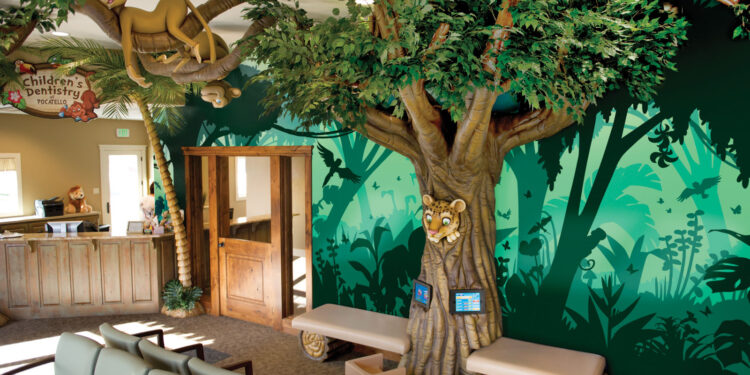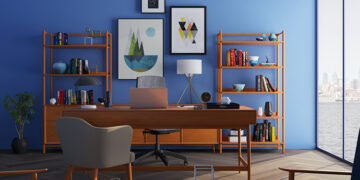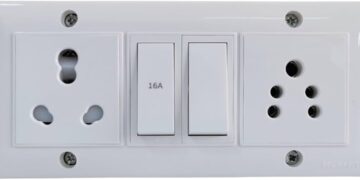The quality of your waiting room is essential. It is frequently the first impression that patients have of your practice, and they may spend more time there than in the examination room. In addition, the atmosphere in your waiting area might be the difference between nervous and relaxed patients and families. This is especially important if you have pediatric patients or individuals who bring their children to appointments with them.
Doctor and dentist waiting rooms are usually kid-friendly. However, these are only some places where children must wait with their parents. A few basic steps will make youngsters feel more at ease, whether you own a fast lube, a nail salon, or any other type of business with a waiting area.
- Include Miniature Furniture
You may not recall what the world looked like when you were a child, but consider the scale of things. When you’re a kid, everything around you is designed to accommodate individuals who are much larger than you. A world consisting of huge chairs that are difficult to climb into and tables that are difficult to see over can be scary.
The best method to help children feel at ease and comfortable is to equip them with furniture that meets their needs. Even the youngest visitors will feel welcome if you have a little table and chairs or even a choice of different-sized seats.
- Include Imaginative & Interactive play
Children require a lot of creative play. You can foster creativity by providing some open-ended toys, 3d graphic, or a pediatric interactive waiting room for kids. A interactive floor wall can enlrage the experience of a kid while they wait, helping them to engage in the activities and socialize with other kids in the waiting area.
Because you’ll most likely have children of various ages playing with toys and interacting with digital medium(if any), yet you have to make sure nothing is a choking hazard. Also, don’t choose toys with annoying beeps and buzzers because you’ll have to listen to them all day!
Here are a few ideas:
- A toy kitchen with some fictitious cuisine
- Interactive waiting room for kids
- Components of construction
- A table for activities
You must remember to disinfect your toys and keep the area clean. Make sure the toys have a place to live as well. A basic basket or toy box will suffice.
- Soft colors and fabrics should be used.
Waiting room office furniture is frequently in dull colors that feel clinical and sterile. While these colorless solutions are less expensive, they offer little to create a welcoming environment for children. Paint can go a long way toward creating a happier, more welcoming environment for both children and adults.
It’s also a good idea to stay away from rough, plastic furniture. Instead, choose chairs and couches that are coated in a soft, durable, and easily cleaned material. Fabric incorporates a number of advantages. It not only creates a welcoming environment, but it also reduces noise by absorbing sound, whereas hard materials tend to magnify sounds and send them bouncing about the room. Also, fabric-covered furniture is safer for young children who want to convert anything into a jungle gym.
- Avoid Using Only Chairs
In addition to providing child-sized furniture, it is a good idea to have loveseat-style seating without armrests. This allows parents to sit right close to their children, keeping them entertained and under control. While some visitors may prefer their privacy, a variety of sitting alternatives can assist meet everyone’s demands and keep them comfortable. Look for unusual designs in different types of seating, such as ottomans and reception benches. Another method to make the waiting room more inviting and exciting for children is incorporating fun shapes.
- Make Good Use of Screens
While a TV can be a helpful diversion in a situation, you should be cautious about where you position TVs and what programs you show. Pediatricians recommend that children spend as little time as possible watching television. The younger the youngster, the less time he or she should spend in front of a screen. A steady stream of cartoons that may or may not be acceptable for their child may irritate parents. If you do decide to include TVs in the waiting room, choose more instructive programming and honor any requests to turn the TV off.
- Take Note of the Lighting
Overhead fluorescent lighting is standard in offices. Because of how strong this form of artificial light is, it has been linked to migraines. Consider sitting with a young child for an extended period of time in a crowded waiting area lit by fluorescent lighting. It’s enough to make anyone feel irritable. Instead of using overhead lights, strategically arrange lamps throughout the waiting room and utilize soft lighting to generate a warner glow that more closely resembles natural light.
- Make a Quiet Area Available
The fluorescent lights, vivid colors, and toys may be too much for a sleepy newborn or toddler. Instead, create a quiet location where parents can take their weary or fussy children to relax without feeling overstimulated if at all possible. For example, consider giving a rocking rocker and soft lighting to help children relax. This is especially crucial in doctor’s and hospital waiting rooms, where unwell children may not be able to play while waiting to be seen.
- Add Materials for Reading
Is the reading material in your waiting room appropriate for children? If not, it’s time to start collecting some children’s books and publications.
Here are some suggestions:
- Request that staff bring any books that their children no longer require.
- Look for relevant books and publications at yard sales.
- Visit a library book sale.
You’ll need a place to keep the books and publications. They should ideally be stored at a height where children can easily reach them. Arrange books neatly on an end table, in a basket, or on a small bookshelf. Consider adding a colored magazine holder for magazines.
You don’t need a lot of stuff because you’re not constructing a library. Aim for six or seven books and two or three periodicals to be available at the same time. Then, if desired, you can replace these on a quarterly basis to keep them updated.
Purchase books and publications that appeal to a wide range of ages. You may include one or two board books for younger children, as well as some easy readers and classic picture books. Before releasing them, read them all to ensure there is no improper stuff.
















